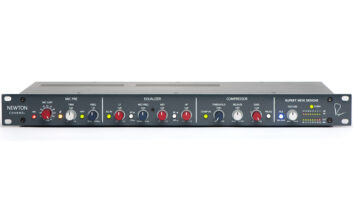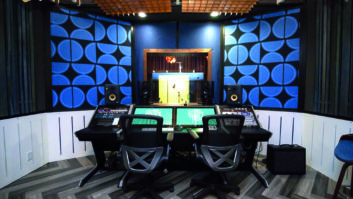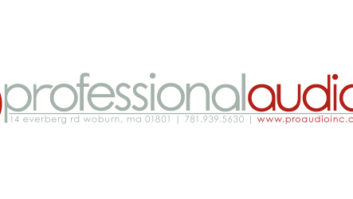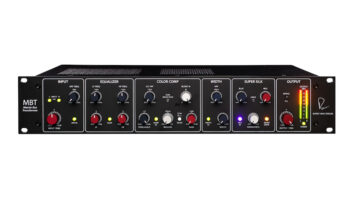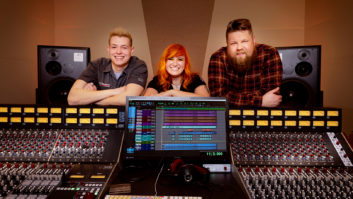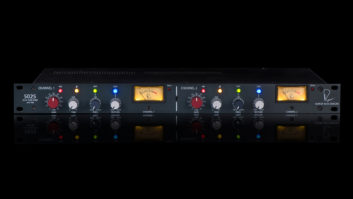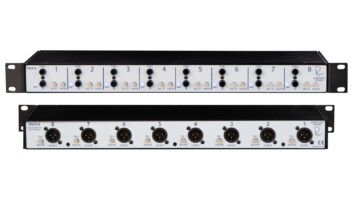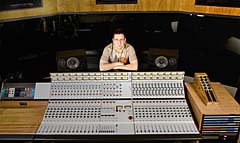
Giancarlo Skolnick with the 32-input Rupert Neve Designs 5088 discrete analog mixing console at Counterpoint Studios in Salt Lake City, Utah.
Giancarlo Skolnick (pictured), CEO and engineer at Counterpoint Studios in Salt Lake City, Utah, has replaced an all-digital system in Studio A with a 32-input Rupert Neve Designs 5088 discrete analog mixing console. The facility, which features architectural and acoustic design by studio bau:ton, primarily focuses on music production for local area musicians.
The console purchase was made in order to realize the studio’s true potential, according to Skolnick. “We were mixing ‘in the box’ and I really wanted—as an engineer, and from the standpoint of making the studio what I thought it always needed to be—to move back toward an analog mixing situation. We have all this incredible outboard gear and no one was really using any of it. It didn’t seem to make any sense. Even something simple like running your reverbs and delays outboard through an analog circuit just seems to sound better to me.”
p>The 5088, which was purchased from David Lyons at recording equipment specialists Sonic Circus, won out over the competition following careful evaluation and a trip to the Rupert Neve Designs facility, which is located in the Texas Hill Country between Austin and San Antonio. “One of the main reasons I picked this console was because of the sonic quality,” Skolnick says. “That was a huge priority for me when I was looking at the different console options. That’s the thing I love about this console: it’s extremely clean. It was amazing—as soon as we put it in everything sounded better: the monitoring, the CD player, the headphone system.”
According to Skolnick, an analog console provides a different way of working and actually makes the production process easier, when compared with mixing in the box. “I’m still getting used to it but my initial impressions are that it’s almost like cheating, because mixing is so much easier now,” he says. “You just put the faders up, add a little bit of reverb and maybe some EQ, and wow, that’s it! Whereas before, in Pro Tools, I felt I had to constantly finesse plug-ins and try tons and tons of different things to get it to work.”
p>The 5088 was installed in the 28×20-foot control room at the end of 2008. “Right away, everybody was really enjoying going back to working that way,” Skolnick says. “There was some debate about whether to go with something that is essentially pretty old school. It really is a throwback, but it’s great because of that. When you’re working on it, it feels like a real desk. I don’t know how else to say it. It feels substantial; it’s not like working on a control surface.”
Skolnick also believes that going back to using an analog console has had a positive impact on the engineer’s creative process. “The tool affects the end result, to a certain extent. When I’m making EQ or level adjustments, I’m not staring at a screen and fiddling with a mouse. My head is facing forward and I make EQ decisions based on what I’m hearing rather than what the graph looks like.”
Studio A’s 30×20-foot live tracking space features two iso booths and a Fazioli F278 concert grand piano. “We’re mostly doing music production—although we do everything, including voice-overs—but it primarily revolves around the local band scene. Salt Lake City is growing pretty quickly so it’s getting better and better. And we have a beautiful piano, so we do a lot of classical music.”
For more information, visit www.rupertneve.com and www.counterpointstudios.com.

